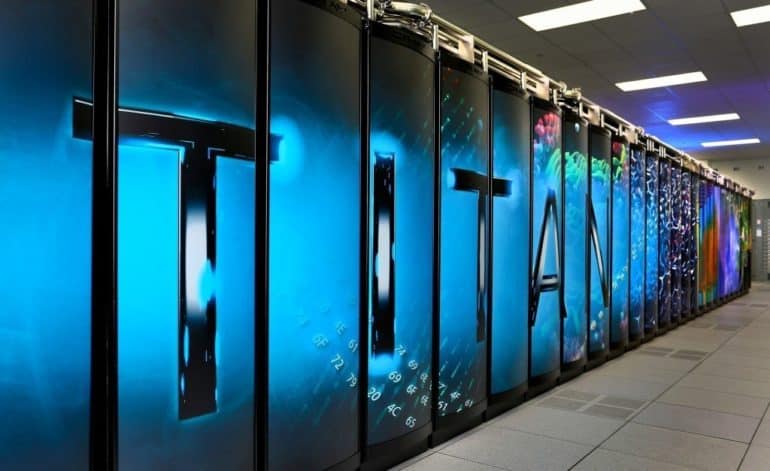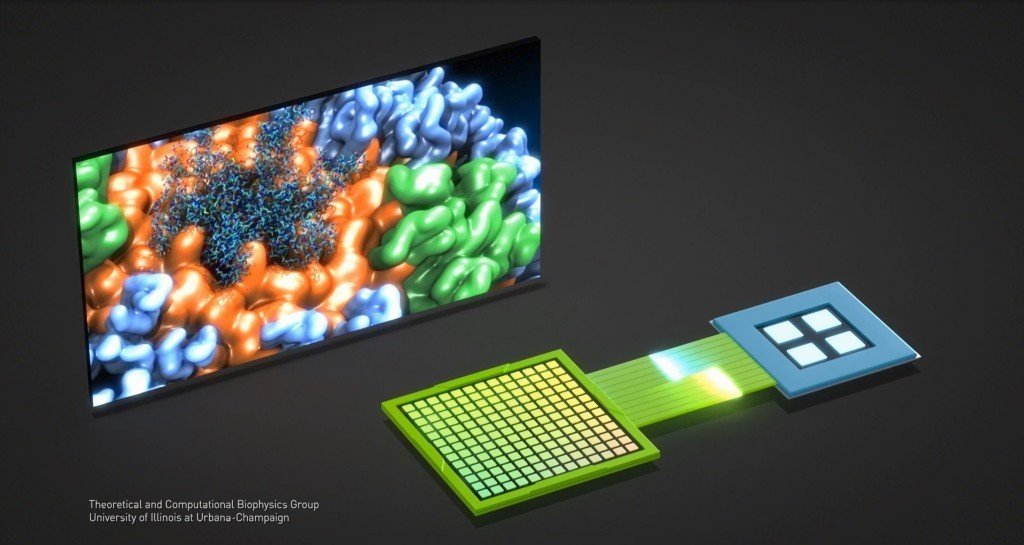New Technologies Hasten Exascale Computing
The supercomputing community has for many years worked toward building exascale systems, which can perform a quintillion – a billion billion or 1018 – floating point calculations per second, known as FLOPS. A FLOP is equivalent to a single mathematical calculation, like multiplying two numbers together. Summit and Sierra will be the next major step on the path to reaching exascale computing levels by virtue of a number of breakthrough technologies. One is the NVIDIA NVLink high-speed GPU interconnect, which will be integrated into NVIDIA GPUs and IBM POWER CPUs powering the new systems. NVLink allows GPUs and CPUs to share data five to 12 times faster than today, and is designed to ultimately enable supercomputers that are 50 to 100 times faster than today’s fastest systems.
The systems will also feature NVIDIA’s future generation GPU architecture, Volta, which will deliver considerably higher performance than the company’s current Maxwell architecture and subsequent Pascal™ design. Delivering significantly higher levels of computational performance than anything available today, NVIDIA GPUs will provide Summit and Sierra with more than 90 percent of the peak floating point processing capability. “Our users have the most complex scientific problems and need exceptionally powerful computers to meet national goals,” said Buddy Bland, project director of the Oak Ridge Leadership Computing Facility at Oak Ridge National Laboratory. “The projected performance of Summit would not have been possible without the combination of these technologies, which will give our users an exceptionally powerful tool to accomplish these goals.”


